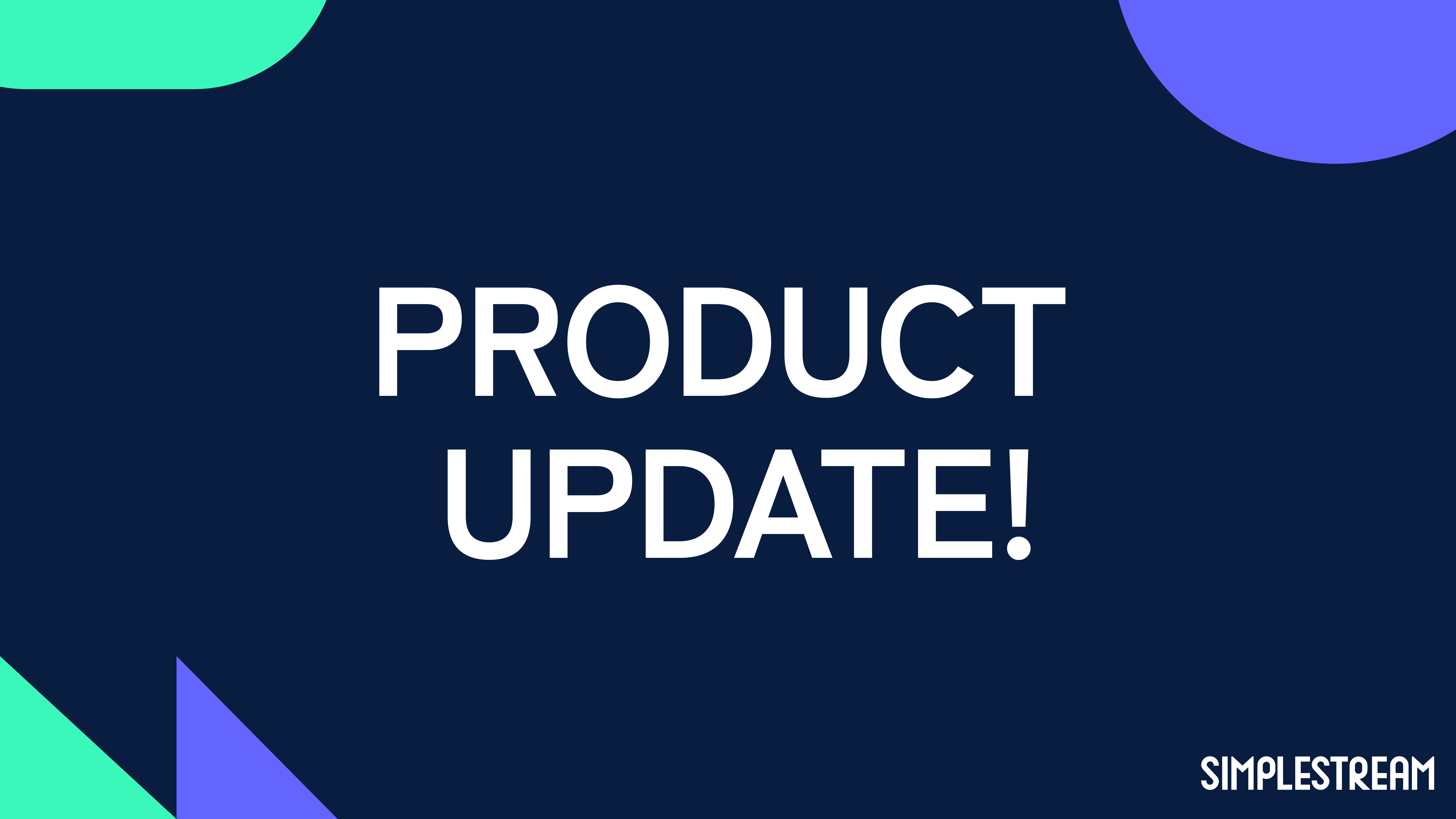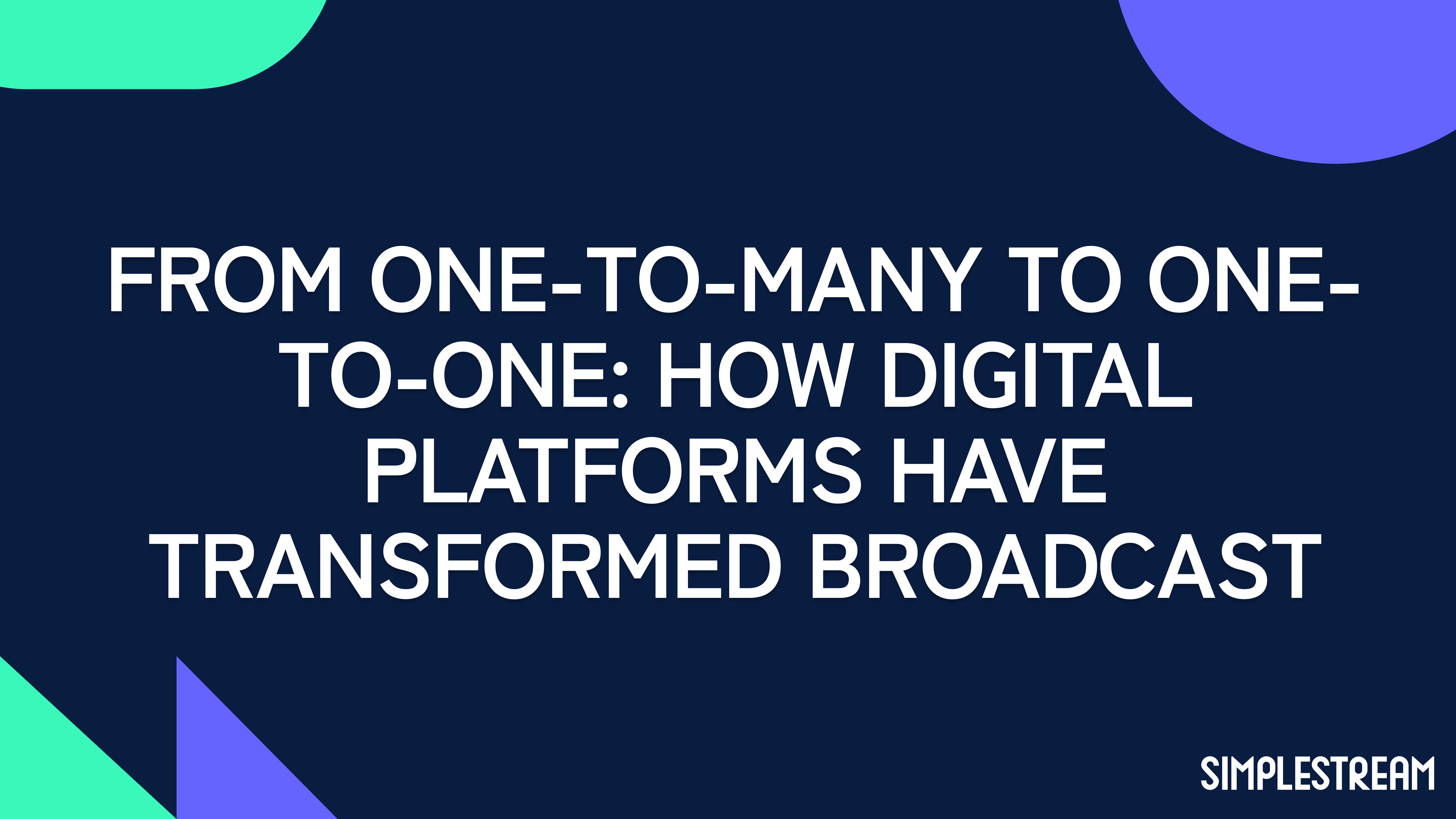FAST times - Adam Smith on the FAST opportunity and its challenges
Our CEO, Adam Smith, was interviewed by Digital TV Europe and talked about how free advertising-supported streaming television can deliver a highly lucrative revenue stream for content owners.
Free advertising-supported streaming television (FAST) can deliver a highly lucrative revenue stream for content owners. But launching FAST channels requires thought and planning. Simplestream CEO Adam Smith talked to Digital TV Europe about the FAST opportunity and the challenges in getting up and running.
Free advertising-supported streaming television (FAST) is now one of the fastest-growing forms of video distribution. The format – a combination of free-to-view linear and on-demand content including unskippable linear ads is seen as a way for content rights-holders to make real money from underutilised assets as well as to complement their subscription services.
OTT technology provider Simplestream has just released VOD2Live, a new FAST-enabling product. For Adam Smith, the company’s founder and CEO, FAST appeals to a wide variety of content providers with an equally varied set of strategies and business models.
“We have startups launching services from scratch on FAST. It’s very interesting because it provides access to global audiences that they just wouldn’t get if they were to launch an app in an App Store with a modest marketing budget,” he says.
Launching an OTT app, with the all the cost and complexity entailed, holds real prospects of making significant revenues only after six months or a year from launch. Launching a FAST service with the major aggregators such as Samsung TV Plus and Pluto TV, on the other hand, gives content providers immediate access to a global audience a slot on an EPG and the chance to generate revenue immediately.
FAST’s appeal is wider, however. For traditional broadcasters, it holds the promise of attracting a younger audience. It enables rights holders to make money from their back catalogues by launching niche thematic channels, perhaps based on a single show, that could not justify the creation of a dedicated OTT app. And for all players, it means showcasing their content on connected TV – which is by far the most attractive location for advertisers.
For Smith, FAST can serve as an ideal entry into the OTT world, where content providers can learn about which content is popular at what time and in what location. They can then launch dedicated apps or look to upsell from FAST to subscription and transactional services.
“Everyone has different ideas on how to approach this. We have customers looking to launch FAST channels as a marketing tool that already may have a subscription OTT service,” says Smith.
One common thread, however, is that content providers now typically are prioritising availability of their service on connected TV rather than mobile screens.
Launching a FAST service with major aggregators such as Samsung TV Plus and Pluto TV gives content providers immediate access to a global audience a slot on an EPG and the chance to generate revenue immediately.
Getting off the ground
What then do content providers need to do to ensure that their FAST offering is successful?
“Content continues to be king, and FAST must be a premium offering. We’re looking at content owners that have a good back catalogue that can be regularly refreshed,” says Smith.
The need to refresh means building a channel schedule is an important element of FAST, and Simplestream’s VOD2Live product enables content providers to do this without making a huge upfront investment.
“What we provide is akin to a playlist where you can just drag and drop a sequence of videos that you want to play on a particular day and pick the start time. Our idea is to minimise barriers to entry – someone can be trained to use this in about five minutes, and you can get up and running very quickly indeed,” says Smith.
The company’s technology allows for the automatic creation of schedules from on-demand assets with intelligent selection to keep the content fresh, but most customers currently prefer to retain a degree of editorial control, he says.
Smith believes that the most successful FAST operators will provide a portfolio of at least five or so thematic channels that are regularly refreshed.
“You want to attract as many viewers as possible, so having more than one channel is preferable. Many of our customers work across multiple genres, and they may not know which ones will perform best, but one of the nice things about FAST is that you can also build pop-up channels. If you find something doesn’t work after three months, you can pivot and try something else,” he says.
While content is king, would-be FAST operators need the technical infrastructure. While FAST is a more flexible option than building an OTT app, it is not without its own complexities.
“One of the biggest ironies of FAST channels is they’re not actually fast to set up,” says Smith. “We see a few barriers to entry that content providers would face if they tried to build their own FAST channel without approaching a vendor.”
The first question is where does FAST content sit? If it resides in a media asset management system the provider will need to retrieve it, transcode it and normalise it to insert ad markers.
“Our existing customers don’t have that problem because we are already integrated with their playout systems and we can simply retrieve the files that they choose to schedule, but for some getting the content into a FAST channel is actually quite a big problem and can take a significant amount of time,” says Smith.
A second key challenge is getting the content onto the various platforms that reach millions of viewers around the world.
“We work with about 20 different OTT aggregators and every one of them has a different specification,” says Smith. While approaching aggregators individually from a standing start could mean a delay of between six weeks to three months to get a channel up and running, Simplestream can cut this to a few days through its existing pre-integrations.
In addition to established FAST aggregators, Smith sees wider room for FAST distribution, highlighting the potential of the UK’s Freeview connected digital-terrestrial platform, for which Simplestream is a certified app developer, and pay TV operators to host FAST channels in the future.
The third major barrier to entry identified by Smith is the challenge of getting the advertising part right.
Unlike VOD, linear FAST channels contain regular ad breaks that last a certain duration. The ads served to the channel need to be targeted to the viewers – targeting being the essence of FAST’s attraction to advertisers – but they also need to fit the break without leaving a blank screen for 20 seconds before programming resumes.
According to Smith, ad tech vendors are for the most part still trying to get to grips with the technical complexity of this, so content providers “need to be careful who they choose”.
Simplestream has pre-integrated its technology with two ad server providers it believes are ahead of the game. For any given FAST channel, information about scheduled ad breaks is passed to the server, which delivers targeted ads of an appropriate duration to fill the break. Simplestream’s VOD2Live also dynamically inserts branded background ‘slates’ to fill any dead airtime within a given break so that the screen never goes blank.

Differentiated product
In such a complex environment, choosing the right technology partners generally is of the utmost importance. Smith says that Simplestream differentiates its offering to content owners in several ways.
First, the product is designed to be simple and to enable content providers to create FAST offerings with minimal investment upfront.
Second, unlike other vendors in the space, Simplestream provides apps as well as its VOD2Live channel proposition. This means that content owners have a clear roadmap from launching FAST to building a more comprehensive OTT offering.
“With our app offering you can quickly and cost-effectively deploy owned and operated branded apps across 15 platforms and have those fully integrated with your FAST offering,” says Smith.
“Your FAST channels could therefore be placed inside your own app but also syndicated to the full range of OTT aggregators – it is a good strategy to do both.”
Simplestream, Smith points out, is able to integrate its API-driven offering with third-party vendors, allowing content companies to use VOD2Live and integrate the resulting FAST offering with an existing OTT app, for example.
Third, Simplestream enables content providers to use content assets that are stored on their own or other third-party online video platforms. There is no requirement to use Simplestream’s own servers.
“Media Manager, our content management system, can work in two different modes,” says Smith.
“We can host the video files or we can operate with virtual records where the videos are actually stored elsewhere, which allows us to work with customers that already use a third-party online video platform.”
He says that this has enabled Simplestream to support the launch of FAST channels very quickly as well as cost-effectively, as content providers are not required to transfer their content assets from their existing OVP before getting started.
Future of FAST
How will the FAST opportunity evolve in the coming months and years? There is no question that FAST is appealing to content owners. Advertising rates on linear streaming channels attract a higher CPM than on-demand streaming because providers can offer advertisers the opportunity to place ads at a particular time of day when the number of viewers of the channel can be predicted with some accuracy – just like with traditional broadcast TV.
But unlike traditional TV, the ads on FAST are also highly targeted based on data about users that is only available on a streaming service.
Smith advises content providers to move quickly, arguing that there is currently “a real land-grab in certain genres” such as kids content as rightsholders scramble to secure privileged positions in aggregators’ programming line-ups.
Over time, Smith expects to see improvements in device user interfaces that will make them more personalised – something that could ultimately take some of the pressure off content providers’ need to secure prime EPG real estate – but for now, content providers feel the need to get FAST off the ground fast.
“We would expect anyone who’s really serious about OTT going forwards to be looking at FAST,” he says.
In this context, Smith believes that VOD2Live is a technology that matches the needs of the moment. It is designed to be simple, enabling content owners to get FAST offerings up and running with minimal investment, but with a clear roadmap to expand their OTT proposition as and when that is appropriate.
This article originally appeared on Digital TV Europe, 5th June 2022.


